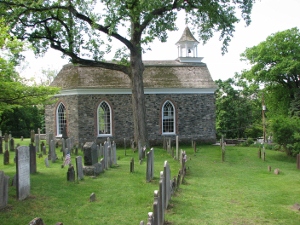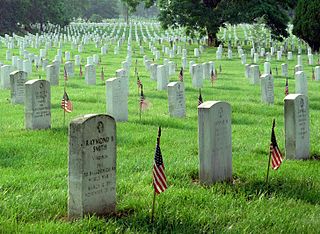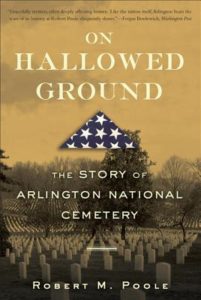Years ago, I meandered along the backroads and tranquil towns in the Hudson River Valley, north of New York City (not far from where I now call home). I came across a beautiful old stone church, and beside it, an idyllic little cemetery where a work-party wielded rakes, hoes, and shovels.
They were the Friends of the Old Dutch Burying Ground and the building was the Old Dutch Church of Sleepy Hollow. The cemetery was, of course, that one made famous by Washington Irving’s, “The Legend of Sleepy Hollow.” Both Irving and the Hessian Solider (the role model for his Headless Horseman) are interred in this graveyard, as are the other real-life residents upon whom Irving modeled his legendary characters.

Sleepy Hollow, New York. Photo © Sherrie Dulworth
While the volunteers cleaned and restored the grounds, one of them graciously offered me a short tour. I was suddenly catapulted into a crash-course of American Revolution, architecture, religious symbolism, rituals, tradition and literature. All in one graveyard!
Thus began my fascination, and long-running friendship, with cemeteries.
Cemeteries simultaneously attract and repel us. They conjure sad memories for some and represent contemplative serenity for others. They have a mysterious allure that we associate with the supernatural, yet we acknowledge them as sacred sites.
For the innately curious, each cemetery has a story waiting to be discovered. Were the residents affluent or a group of now-forgotten pioneer settlers; educated or illiterate; healthy or plagued by an epidemic?
We usually associate Halloween with cemeteries (ghostly spirits and all), but it is Memorial Day―that unofficial kick-off to the summer season―that is connected through its origins…once dubbed as Decoration Day.
After the end of the Civil War, a tradition emerged of placing flowers on the graves and monuments of the fallen soldiers who lost their lives in battle. Decoration Day was intended as a day of reconciliation between the North and the South. Following World War I, the ritual expanded to honor all American veterans who died in any war. Now in some places, that weekend is used to pay respect to all the dead (not only veterans) and as a chance to give the entire burial grounds a facelift. If you visit the Appalachian region over the Memorial Day weekend, you will find many of the cemeteries awash in vibrant new floral arrangements and an air that is more festive than funereal, sometimes including a picnic dinner on the grounds.
No burial site in the U.S. is more famous than Arlington National Cemetery, just outside of Washington D.C. Despite my long-standing interest in cemeteries, I didn’t expect to be enthralled reading a book about the history and evolution of this famous site. I was wrong.

Public Domain Image
“On Hallowed Ground: The Story of Arlington National Cemetery,” is a rich story of American history and culture told through the lens of Arlington, originally the homestead of Confederate General Robert E. Lee.
The book captures little-known facts about some of our country’s more prominent wars but also those that are often given short shrift in history class, like the Mexican-American War.
Reading how the Tomb of the Unknown Soldier came to be created, both politically and physically, was intriguing, but the mystery and intricate ceremony that was developed to ensure that the remains of the first “Unknowns” would remain unknown, was just short of mind-boggling.
If you were born before 1960, you likely watched the televised funeral procession of President John F. Kennedy. Scenes of a grieving nation are indelibly imprinted in our memory, yet, I had never considered the behind-the-scenes precision and drilling that it took to so quickly orchestrate an event of such epic proportions. It is a wonder that there were no ceremonial fiascos akin to― the Presidential casket being dropped upon the steep Capitol steps, a runaway riderless horse, or an exploding fireball as Mrs. Kennedy lit the eternal flame.
More than simply lessons about graves, the book offers grave lessons: how a brilliant man like Lee could follow a tainted path of terrible choices and misguided allegiances; how political ambitions led to mistakes in selecting the Unknown Soldier from the Vietnam War; and on a positive note, how we can pay homage to the warriors without glorifying the war.
I hope it engages your head and your heart as it did mine…right down to the final soulful note of Taps.
“Cemeteries do tell us much about the culture which they serve, for how a society disposes of and remembers its dead says something of its way of life.” “The Cemetery Book” by Tom Weil